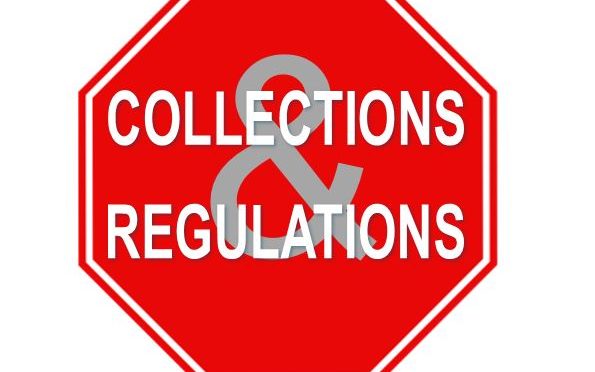Collections & Regulations: Are You Leaving Money on the Table?
Blog: Enterprise Decision Management Blog

Debt collectors, like everyone else in financial services, are drowning in regulatory changes. In my last posts I’ve discussed IFRS 9, GDPR and, to a lesser extent, the basket of fun known as PSD2.
One of the natural human responses to change is to narrow one’s focus to the necessary task at hand and push everything else away. Just focus on ticking the boxes, and ignore the cries to rethink the way we’re doing business. Sweat what we’ve got and don’t spend any money. That’s what I’m hearing at many collection shops when the conversation turns to optimization or advanced analytics.
There’s a cost to this approach, though. Collectors are in danger of leaving money — a lot of money — on the table.
The IFRS 9 Bucket Challenge
Here’s the first reason: Impairment provisions and losses. This is what I have dubbed the IFRS 9 Bucket Challenge. I wrote about this before, but here’s more.
Under IFRS 9, lenders will pay much higher impairment on accounts that roll to 31 days past due on any account. If they are unable to successfully argue there has been no measurable deterioration in risk.
This will, as I noted before, focus collectors on doing everything they can to keep accounts from rolling, including restructuring. But if the restructures you do have exhibit a greater than 10% post-restructure default rate (up to and above a 35% default rate is not uncommon), that’s an indication that you have a problem, and it typically has little to do with either the customer or the regulator! It’s down to your policy, tools and data. That can happen because you’re not using the analytics to see who should be restructured, how (which of the thousands of restructure tool combinations) and under what conditions. If you did, you would probably restructure twice as many accounts for a 10% default rate.
If you look into your buckets and see that you’ve got 15-25% of accounts remaining static, you should be questioning that. Why are they static? Those accounts can only remain static if they can pay arrears but not contracted next instalment. That means they have intent to repay but constrained ability. If you restructured properly, you could get them out of collections. The stronger the restructure performance, the less lifetime provision you are likely to need to hold on this population of customers.
Lots of collection shops have pockets of value they don’t see because the pattern has always been there. They don’t stop to ask, what is the customer behavior that is causing this pattern? Can it help me improve my profitability under IFRS 9 if I understand the behavior and change the way I handle it?
Take the IFRS 9 Quiz
To be honest, as the date for adoption of IFRS looms ever closer, all of us in collections should now have the answers to many IFRS 9 related questions. Take a quick tick test:
- We have reviewed the way we identify and determine the correct restructure for those for whom the solution is appropriate, – Check Y/N
- We know how we are going to minimise inappropriate 31 dpd triggered status 2. – Check Y/N
- We are clear on who is working the status 2 & 3 UTD accounts, how and at what portfolio impact. – Check Y/N
- We know we will do right by the customer and how affordable that desired level of tolerance is to our organizations – Check Y/N
- We are clear as to how we will manage those customers whose status change means we may need to treat them in a way we would just not do today. – Check Y/N
- We are clear as to what part our 3rd party partners will be playing in an IFRS world, they are aware and we have an advantageous position agreed over the competition. – Check Y/N
- We fully understand how we leverage our data and analytics to help us both answer and execute our IFRS influenced collections strategies. – Check Y/N
There is potentially a lot of money to be gained by looking at how we manage in an IFRS 9 world. Next time, I’ll look at another factor: Does it cost more to invest in a new system than to leave the old one running?
Until then, may all your promises by kept!
The post Collections & Regulations: Are You Leaving Money on the Table? appeared first on FICO.
Leave a Comment
You must be logged in to post a comment.







